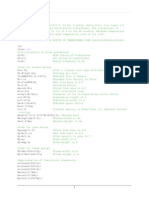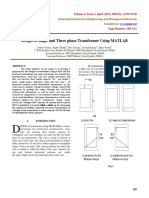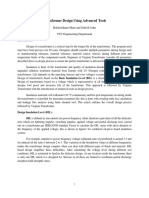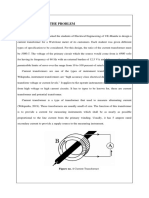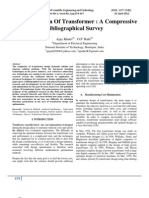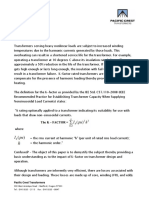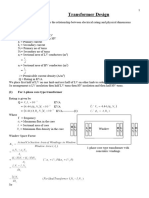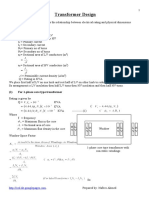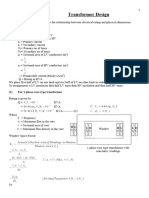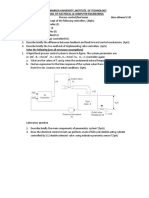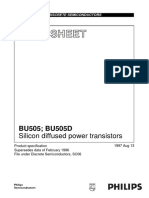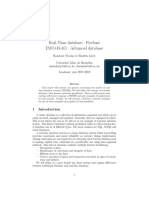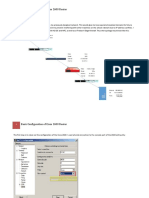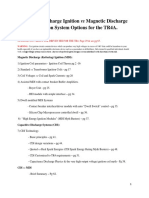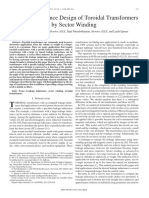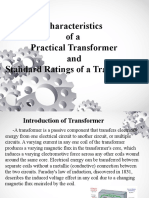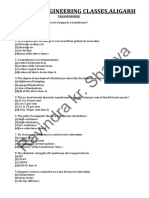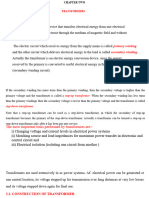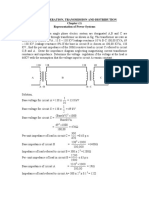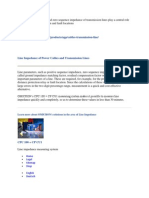100% found this document useful (1 vote)
795 views15 pagesTransformer Design: OUTPUT EQUATION: - It Gives The Relationship Between Electrical Rating and Physical Dimensions
The document discusses transformer design and provides equations to calculate transformer ratings based on various design parameters. It describes:
1) Equations to calculate the rating (Q) of a 1-phase core type transformer based on factors like frequency (f), core area (Ai), maximum flux density (Bm), window space factor (Kw) and window area (Aw).
2) These equations also apply to 1-phase shell type transformers.
3) Similar equations are provided for 3-phase core type and shell type transformers.
4) Guidelines for selecting maximum flux density (Bm) based on core material and permissible current density (δ) based on cooling method are given.
5
Uploaded by
heruye mulugetaCopyright
© © All Rights Reserved
We take content rights seriously. If you suspect this is your content, claim it here.
Available Formats
Download as PDF, TXT or read online on Scribd
100% found this document useful (1 vote)
795 views15 pagesTransformer Design: OUTPUT EQUATION: - It Gives The Relationship Between Electrical Rating and Physical Dimensions
The document discusses transformer design and provides equations to calculate transformer ratings based on various design parameters. It describes:
1) Equations to calculate the rating (Q) of a 1-phase core type transformer based on factors like frequency (f), core area (Ai), maximum flux density (Bm), window space factor (Kw) and window area (Aw).
2) These equations also apply to 1-phase shell type transformers.
3) Similar equations are provided for 3-phase core type and shell type transformers.
4) Guidelines for selecting maximum flux density (Bm) based on core material and permissible current density (δ) based on cooling method are given.
5
Uploaded by
heruye mulugetaCopyright
© © All Rights Reserved
We take content rights seriously. If you suspect this is your content, claim it here.
Available Formats
Download as PDF, TXT or read online on Scribd
/ 15










